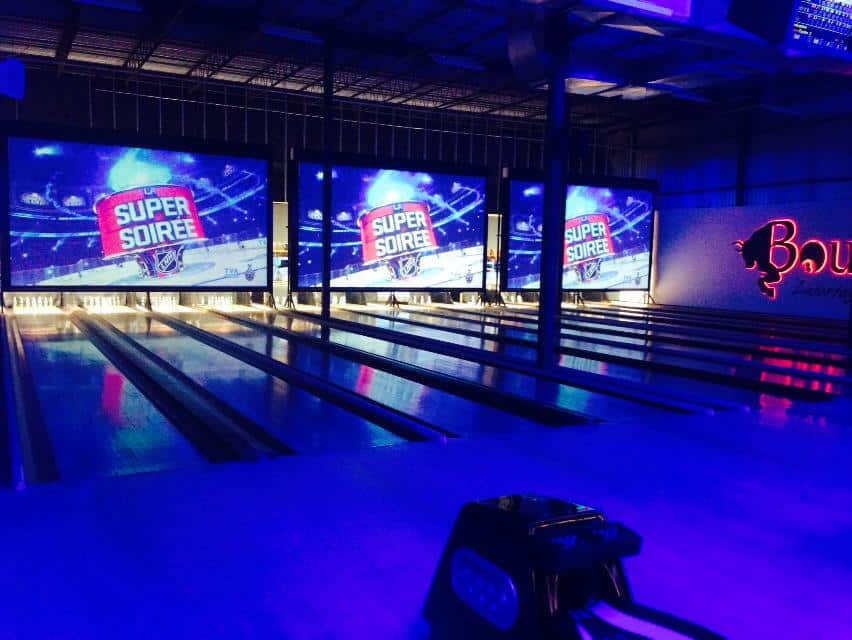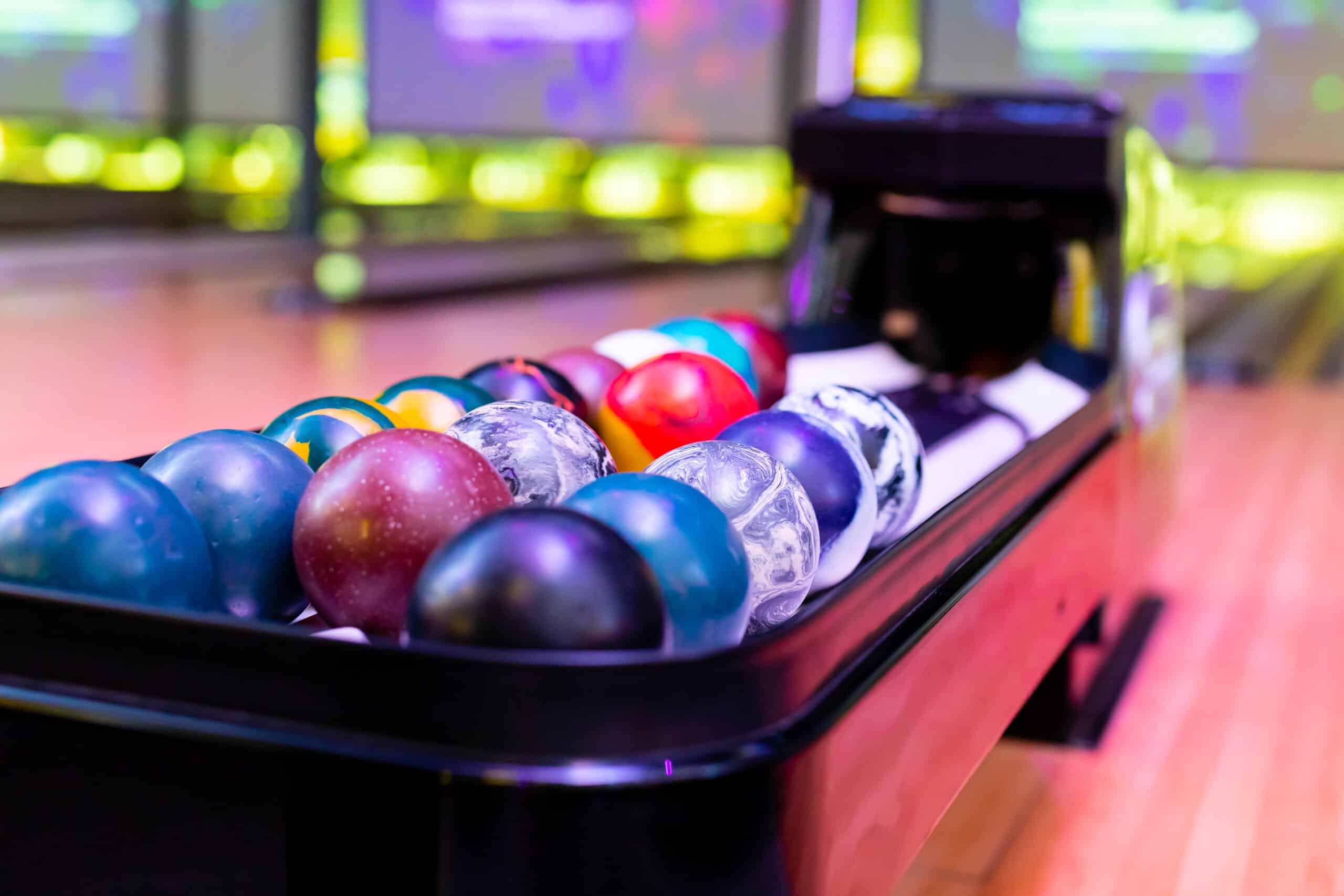Whether you’re a beginner, an intermediate player or a seasoned competitor, the choice of bowling ball is essential! They differ in terms of material, core and level of performance.
In this article, we’ll look at the main types of bowling ball, how to choose the right one and find out more about Duckpin Bowling.

The different types of bowling balls
There are several types of bowling ball, adapted to different levels of play and lane conditions. Here are the main categories:
1. Beginner and Recreational Bowling Balls
Material: Plastic (polyester), available in several colors and models.
Features :
- Smooth surface, low friction
- Straight trajectory line (little hook effect)
- Ideal for beginners and precision shooting (spares)
2. Intermediate balls (Urethane)
Material: Urethane, available in various colors and patterns.
Features :
- More grip than plastic balls
- Better curve control (hook)
- Used for medium-oiled track conditions
3. Performance balls (Reactive resin)
Material: Reactive Resin, available in a variety of colors and patterns.
Features :
- Very responsive on oiled tracks
- Provides a great hook effect
- Ideal for experienced, competitive and professional players
Performance balls offer superior quality thanks to their specialized coatings, different color options and patterns, adapted to different track conditions. The choice of ball also depends on the player’s skill level.
4 . Specialized balls
✅ Spare ball: Made of plastic or urethane, available in various models and patterns, designed to hit the remaining pins with no effect.
✅ Dry track ball: Available in several colors and models, with less friction to avoid aggressive hooks.
✅ Heavy or light ball: from 3.8 pounds to 3.12 (lbs), adapted to the size and strength of the player’s hand, available in different models and colors.
It’s important to select a ball that matches the size and shape of your hand.
Practical tips for choosing your bowling ball
- Consider bowling lane materials (synthetic or wood)
- Pay attention to the amount of oil the bowling alley puts on the lane (lane speed).
- Make sure the lane groove is present to identify the necessary grip of the ball on it to make a good throw.
Why doesn’t BoulZeye have any big balls?
The BoulZeye center offers a style of bowling called “duckpin” rather than traditional “tenpin” bowling. This means that the balls used are smaller and without finger holes, available in a variety of colors and models.

Duckpin Bowling
Duckpin bowling is a style of bowling in which players use smaller balls and shorter, lighter pins than those used in traditional bowling. Its main features are :
- The balls :
- Diameter: Approximately 4.75 to 5 inches (compared to 8.6 inches for tenpin balls).
- Weight: Between 3.6 and 3.12 pounds.
- No finger holes: The balls are thrown directly by hand, making them more accessible, especially for children and beginners.
- Skittles :
- Height: Approx. 9 inches (compared with 15 inches for tenpin pins).
- Shape: Stubbier and wider, making them harder to tip over.
- Layout: Same as traditional bowling (10 pins in a triangle).
- Origin :
- Duckpin Bowling originated in the USA in the early 20th century, probably in the Baltimore area.
- It is particularly popular in the northeastern United States and Canada.
Why did you make this choice?
- Accessibility: Lighter balls are better suited to children, beginners and occasional players.
- More dynamic experience: Games are faster and offer a different challenge, as the pins are smaller and harder to knock down.
- Safety: Less risk of injury from large, heavy balls.
Benefits of duckpin bowling
✅ Easier to handle for all ages
✅ No need to choose a ball based on finger size
✅ Makes the game more competitive with more accurate pitches, increasing strike chances



